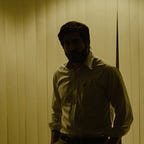Mise en scene (symbolic code)
Mise en scene (or mise-en-scène) is originally a french theatre term that translates roughly to ‘everything within the frame’. In media terms it has become to mean the description of all the objects with a frame of the media product and how they have been arranged.
The study of mise en scene often involves pausing a media product and analysing how the elements of the frame combine to create meaning for the audience. The idea originally of studying mise en scene was to able to identify and discuss certain auters, or accomplished and artistic filmmakers, based soley on how they specifically used these elements in a recognisable way.
Some of the elements included in mise en scene are set design, costume, props, staging and composition. Also included are other major codes such as lighting, colour and acting.
Elements of Mise en scene
Set Design
Whilst setting is about the time and location of a narrative or scene, the set design discusses how that setting is being presented. In ‘10 Cloverfield Lane’ the design of the bomb shelter is connected to the character of Howard and his need for a family. The stark bomb shelter’s walls have been painted pink using lamp shades on the lights.
A set design can be seen as realistic or stylistic. A realistic set design strives to look exactly how the setting may look in real life. This may include intricate building of sets or shooting on location. A stylistic set design will call attention to itself in some way for the audience to notice. This may have a connection to the genre of the narrative.
Costume
Costume includes the wardrobe choices and make-up that is used to convey a character’s status or personality.
Costume can have a wide variety of other functions. They can help signify the setting or era of the narrative, can play important roles in the plot of the film, draw the eye to a specific character or help point out the difference between characters or the setting.
Props
Prop is short for property, another term borrowed from the theatre. When an object in the setting has a function within the ongoing action, it is then called a prop. Props are often closely linked to the plot of the narrative, or a cause and effect relationship. If a prop is repeated throughout the narrative, it may become a motif, and connected to a theme or moral of the story.
A prop that is used to drive a plot forward is sometimes called a Macguffin. This is a term that was created by Alfred Hitchcock to describe a prop that only serves the purpose to create motivation. It is usually of great worth to someone.
Staging and Composition
Visual Composition refers to how elements within the frame have been arranged for a particular effect. This includes it’s position within the frame and it’s relationship with other elements within the frame. Elements can include characters or props.
A looming figure in the foreground can suggest an important character or a dominant figure. A character’s relationship to each other on screen can suggest the character’s relationship within the scene. If they are close they would be more intimate than if they were far away. A character higher than another on screen may suggest dominance.
Discussing the functions of mise en scene
When discussing mise en scene it’s important to discuss the combination of different elements of it. Stronger discussions of mise en scene will always include more than one element.
